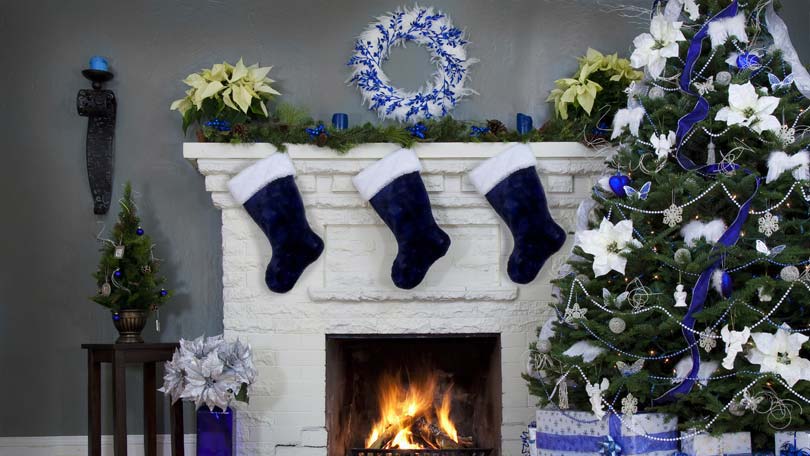
Nothing says Christmas quite like the string of stockings left out for Santa to place a few precious small gifts in while everyone is fast asleep. Christmas stockings are a personal, functional, and wondrous holiday tradition. We’ve become quite creative with the tradition, making stockings of all shapes and sizes, colors and designs, and of course with or without a fireplace, we can find an adequate place for our Christmas stockings.
I am equally guilty as other pet owners as running out and purchasing a Christmas stocking for my pets. Naturally, this appalls some people, yet those stockings seem to be receiving equal attention from Santa Claus, so he obviously doesn’t consider it ridiculous or silly. The dogs appreciate it.
The stocking is very important to young children, as it is the one place that Santa has been known to send his messages about being naughty. A child who receives gifts in their stocking obviously had good behavior, while the child who had behaved miserably all year long can pretty much count on a lump of coal in their stocking instead of small gifts.
When the tradition began in Germany, children simply used one of their everyday socks and hung them up on the mantle. Over time someone came up with the very lucrative notion of creating stockings that were explicitly for the purpose of Christmas joy. These days we can of course purchase (or make) stockings that are bright, personalized, and as excruciatingly large as possible. Embroidering the stockings with names helps to keep Santa’s confusion to a minimum.
Originally, stockings were meant to hold five small gifts, one for each of the five senses. Fruit or candy pleased the tastes, perfumes or bubble bath created the smell, something soft like stuffed toy or even modeling clay appeased the sense of touch, a visually stimulating gift like jewelry, and anything that produced sound for the ears, were all stuffed into one small sock.
Other countries, such as Holland, still use shoes instead of stockings. Yet for the most part, stockings are quite universal. Universally speaking, stocking stuffers are getting larger and more expensive. It is not unusual for the stocking stuffers to be too large for the stocking, and thus a small pile of wrapped presents may appear right next to the stocking.
Stockings are fabulous for families with young children who get up at the absolute crack of dawn anticipating the gifts below the Christmas tree. Allowing children to open their stocking stuffers while the parental unit or units wake and grab that first and much needed cup of coffee can appease young children without hassling the parents too much about waking up.
The legend of Saint Nicholas states that three young women whom were destined for a life of poverty since their father did not have the necessary dowries to marry his daughters off received the dowry money from Saint Nicholas. Some people say that he attempted to remain anonymous in his efforts to help the three young women. Thus, Saint Nicholas rode by the household late one night and tossed the dowry money down the chimney. It is said that the gold coins tossed down the chimney were ironically captured by the young women’s stockings that had been hung there to dry. Perhaps this is true, or a sweet myth, or a combination of both. Either way, this is the believed origin of hanging stockings on the mantle.
Not all modern homes have fireplaces, and thus any basic location that Santa can readily discover is considered the perfect place to hang Christmas stockings. Some families hang them along a staircase or along the doorframe near the Christmas tree.
Some people still consider stockings to be the origin of good luck, as they became after the three sisters received their dowry money. Although a surprising number of people hang stockings for Christmas without ever delving into the traditions or ascertaining the knowledge about why we do this or when it all began. For most American children, stockings are simply another avenue for gifts to arrive on Christmas morning.
While Christmas stocking traditions are unique to each family, the tradition itself carries a higher meaning when people understand why we follow this tradition or what it symbolizes to us.
